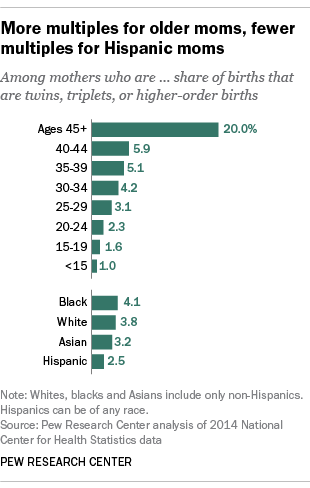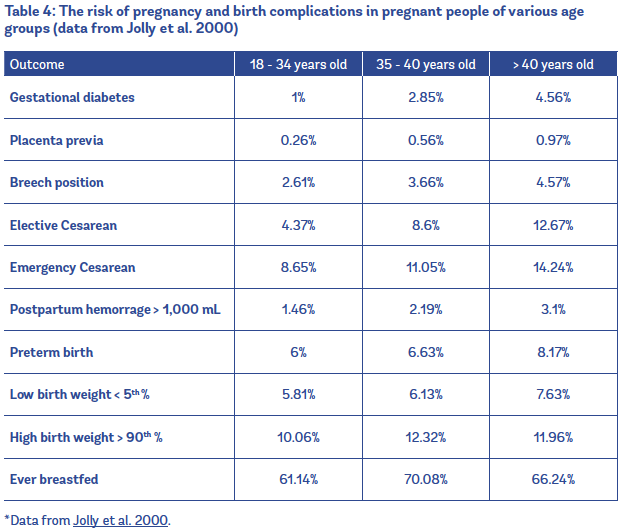I had my first child at 32, my bestie was the same age, my colleague was 39 and I have another who’s just announced she’s pregnant at 40. Delaying pregnancy due to building a career, finding the right relationship or being emotionally and financially ready has become increasingly popular and in fact just recently, pregnancy after 30 has overtaken pregnancy rates for those in their 20’s. But along with age comes some risks we need to way up in our journey to motherhood. When I first started reading about the risks of pregnancy after 30, I have to say some of the statistics to do with a high risks pregnancy age really freaked me out but rest assured there are a few things you can do to minimise some of the risks.
What is considered a high risk pregnancy age?

When looking at statistics, one of the highest risks for pregnancy complications is the age of the mother. So just what is considered a high risk pregnancy age? Most health professionals consider a high risk pregnancy age to be anything under 17 or over 35 but that doesn’t mean that there still isn’t increased risk for those younger than 35 as we approach that age bracket. Certainly, as a woman in my 30’s it was something I took seriously in our decision to have a baby and a reason why I took extra tests out that would usually be automatically done for those considered to be high risk pregnancy age.
Pregnancy risks by age – What are the risks of pregnancy after 30?
So exactly what are we talking about when we refer to the risks of pregnancy after 30? Some of the increased pregnancy risks by age are:
- Birth defects/ genetic risks
- Twins and multiples
- Miscarriage
- Still birth
- Decline in fertility
- High blood pressure
- Gestational diabetes
Pregnancy Risks by Age #1 – Birth Defects and Genetic Risks
One of the scariest risks of pregnancy after 30 is an increase in the chance of birth defects such as spina bifida, missing or malformed body parts, heart defects and cleft palate. There is also a bigger risk of chromosome problems such as Down Syndrome which increases from 1 in 1200 at age 25 to 1 in 900 by age 30 and as many as 1 in 100 by age 40. Preventative measures like taking folic acid, not drinking alcohol or smoking and eating a healthy diet can all be helpful in preventing birth defects as one of the risks of pregnancy after 30. I personally used a supplement like Elevit throughout my pregnancy to ensure I was getting enough folic acid as well as a boost of lots of other vitamins to stay healthy. The other step we took to stay informed about our risks of pregnancy after 30 was to obtain extra genetic testing including the Harmony Test or NIPT at 10 weeks to test for the most common genetic abnormalities such as Trisomy 21 (Down Syndrome).
Pregnancy Risks by Age Chart – Down Syndrome

Pregnancy Risks by Age #2 – Twins or Multiples

Not necessarily a bad thing, but another one of the risks of pregnancy after 30 is the chance of having multiple births. Studies have concluded that older woman going through hormonal changes tend to produce more follicle stimulating hormone (FSH) which is responsible for egg drop at ovulation. More FSH equals a higher potential for more than one egg to be released and voila you’re having twins or multiples. Something to consider when you’re weighing up financial plans and preparing for a family, especially if you already have other children to consider.
Pregnancy Risks by Age #3 – Miscarriage
One of the awful risks of pregnancy after 30 has a lot to do with our information above on genetic risks. About half of all miscarriages occur due to chromosome problems and as we noted, as the risk of chromosomal issues increases with the mothers age, then so too does the risk of miscarriage. Research has shown a steady incline in miscarriage as a risk of pregnancy after 30 with less than 9% of woman aged 20-24 suffering a loss and rising to almost 75% for woman over 45. Some studies have shown this also has a lot to do with a decline in the quality of the eggs we have left.
Pregnancy Risks by Age #4 – Stillbirth
I can’t imagine much worse than carrying your child for so long, only to suffer a loss by stillbirth. I have had friends go through this horrendous event and you wouldn’t wish it on anyone. Similar to our other risks of pregnancy after 30, stillbirth is up to 2.23 times higher in those of high risk pregnancy age. It too has a steady incline of risk with less than 5% occurring in woman under 34, around 6% in woman aged 35-40 and over 8% for those over 40. Interestingly, it is shown to be even greater for those having their first child at these ages. Some preventative measures can be taken such as inducing woman earlier for those stillbirths that occurred in the 39th and 40th weeks of pregnancy.
Pregnancy Risks by Age #5 – Decline in Fertility

This is one of the risks of pregnancy after 30 that we’re all probably aware of, right? That lovely ticking time bomb known as decline in fertility that comes with a high risk pregnancy age. As some of you will remember from sex ed classes, we are born with all the eggs we will ever have. As we get older, this means that we have less and less eggs and the quality of those eggs is also reduced. I like to think of it like my lovely chicken eggs in the fridge. Every time we want one, we take one out but sadly those others left in there are declining in quality, until there is nothing good left. Unfortunately, we humans can’t just pop down to the shop to grab a few more eggs to fertilise (or at least not our own). Male fertility also declines with age due to reduced sperm count, swimability and volume. There isn’t a lot we can do about this, apart from having children as soon as we are ready. To help on the male side, I made my husband take Menevit which helps promote sperm health.
Pregnancy Risks by Age #6 – Other risks
Research has found that with increased age, we see small increases in most risks of pregnancy after 30 and birth related complications. These include gestational diabetes, need for emergency caesareans, high blood pressure, preterm birth, low or high birth weights, placenta previa, breech positions, postpartum haemorrhages and maternal deaths. Many of these conditions are manageable with early intervention so its important to undertake testing such as everyone’s favourite diabetes test drink and follow recommendations from your health professional. Those of high risk pregnancy age over 35 automatically get extra tests in various areas but some of these are available to those under 35 if you are happy to pay for them. Speak with your health professional about those you may wish to undertake. I found this offered me peace of mind at a small extra cost.
Pregnancy Risks by Age Chart – Other Risks

Weighing Up Your Pregnancy Risks by Age
In the end, we obviously decided that we were willing to take the risks presented to us, utilising whatever preventative measures we could to help minimise our risks of pregnancy after 30 and give us peace of mind along the way that our little baby was doing just fine. Many health professionals said to me that as long as I was healthy, then chances are my pregnancy would be too and it really was a textbook pregnancy for the most part. My next pregnancy will put me officially into the high risk pregnancy age group but if a baby Is something you really want then I think you’ll find the benefits way out way the risks.

